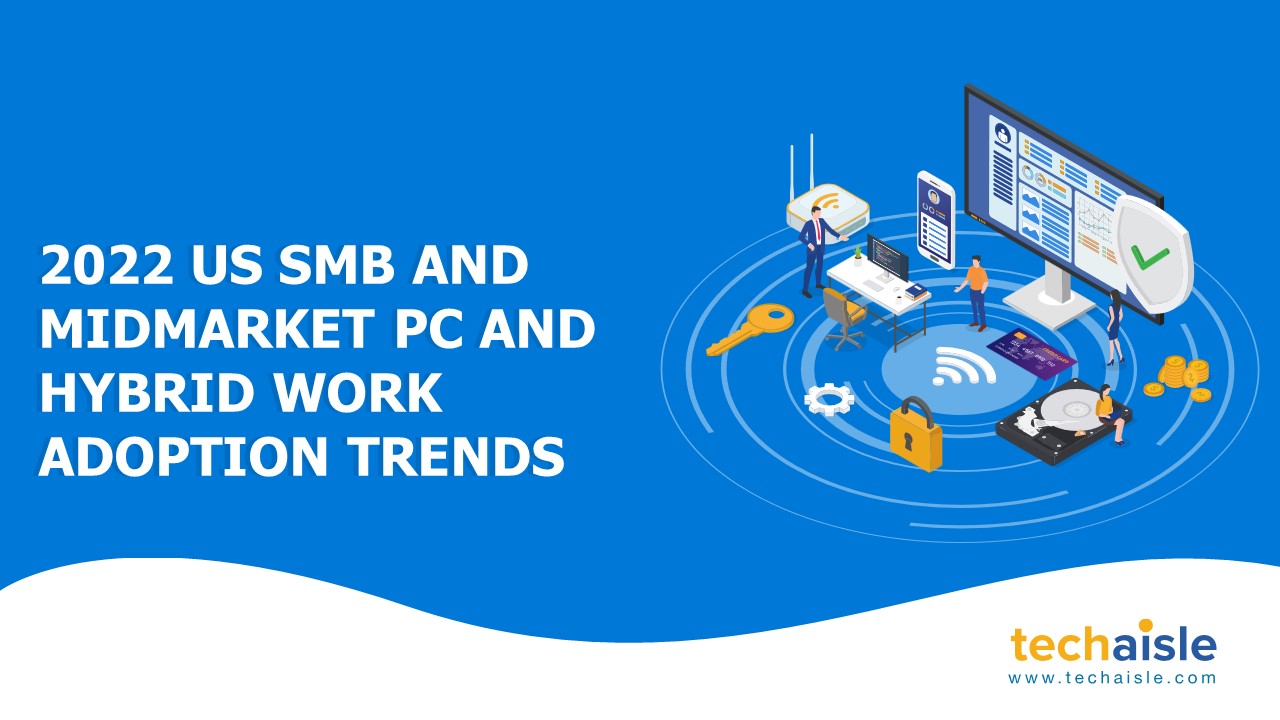Techaisle’s PC market study forecasts SMBs worldwide are likely to purchase 104.5 million PCs in 2022, a growth of 3.4 percent from 2021. The North American and Western Europe SMB PC shipment growth rates will likely be below 3 percent. 20-49 employee size segment will see a 3.9 percent growth rate, the highest among all employee sizes.
In 2022, SMBs are looking past the PC supply-chain challenges and focusing on improving employee experience, better security features offered by Windows 11, and accelerated move to cloud infrastructure requiring modern PCs. The transition to cloud infrastructure will also enable SMBs to utilize computing as a service rather than physical servers for their businesses, shifting spending from CAPEX to OPEX. The IT budget surplus will allow SMBs to purchase newer, more powerful PCs for further growth endeavors. In addition, SMBs prefer easier manageability, cost-effective provisioning, and simpler remote management to improve IT efficiency, available in Windows 11. Techaisle research data suggests that Windows 11 deployment momentum is building. Each of the above factors will drive SMB PC shipment and growth in 2022. PC is still the centerpiece of business productivity, and buying a new PC is likely to have a more significant impact on productivity than any other technology. Modern PCs promise to deliver more than an incremental improvement in performance and features, and even price-conscious small businesses benefit significantly from replacing older PCs with newer PCs.
Complexity crisis creates new opportunities. Global economies are recovering, and the time for SMBs to take on new challenges is now. Indeed, inflation, energy price, lack of available workforce, and uncertainty concern SMBs; they also know that agility and resilience are realizable. The critical focus of business investment is about the ‘work’: how an increasingly connected world supports the pursuit of previously unattainable objectives. Their most crucial IT-related development focus is on connectedness – connected cloud, edge, applications, security, collaboration, workspaces, and insights. This means new ways of working, new technologies and capabilities to grow their business, and an agile, mobile work style. That means taking advantage of PC hardware and software innovations that are most likely to make SMBs more competitive. There have been significant hardware and software innovations that SMBs businesses can benefit from - faster processors, improved graphics, improved energy efficiency, improved communication, better security, better battery life, improved manageability, application stability, security, networking, and collaboration.
SMBs also see customer demand, contributing to revenue growth and an accelerated need for technology investment. For example, in the fourth quarter (October-December), US consumer spending in 2021 climbed by 7 percent over 2020 and 9 percent over 2019 and is not expected to slow down as the net household wealth rose to US$161 trillion 2021 from US$131 trillion in 2020. Similarly, although manufacturing production fell, the manufacturing capacity utilization was 1.5 percent greater than before the pandemic. Professional services employment has been increasing globally, contributing to PC adoption.
New business formation is another barometer of SMB PC shipments, predominantly impacting the 1-9 employee segment. Here, countries and regions have shown different forward-looking indicators. There has been an increase in applications for new businesses in the US. On the other hand, in Australia, the total business count in 2021 increased compared to 2020, but nearly an equal number of businesses exited. In PRC, in the first 11 months of 2021, just 1.32 million new micro and small enterprises were established, compared to 6.13 million in 2020, and more than 3x the number of small businesses closed their doors permanently as formed. The UK, for example, is showing a unique trend. The total number of new business formations in 2021 was 9 percent more than the average number of formations from 2017 to 2020. Still, the average number of employees in Q4 2021 was 22 percent lower, shifting the dynamics of the PC-to-employee ratio requiring fewer PCs.
The SMB market segment is changing rapidly, and each of the factors outlined in this research note and Techaisle’s detailed research impact PC sales within the SMB segment. The last two years have seen incredible growth in SMB PC sales. Techaisle was the first to predict in its April 2020 research note that the PC is the essential SMB productivity device. SMBs would accelerate new SMB PC purchases to be deployed for the sudden increase in work-at-home employees. The underlying new PC security architectures would create opportunities as many SMB IT managers integrate, support, and secure these devices. Mobility solutions would accelerate. SMB buyers, especially the business decision-makers (BDMs), would aggressively move past devices to a mobile solution strategy - inclusive of mobility infrastructure, workforce applications, and services, management, analytics, security to capitalize on the capabilities of new PCs.
There may not be a similar heady double-digit PC growth rate in 2022, but indications are that the SMB PC market will continue to grow. Although Q1 2022 SMB PC shipment growth is forecast to be -3.5 percent over Q4 2021, partly due to geopolitical risks and SMBs re-prioritizing their capital investments, Techaisle expects the sales to pick up in Q2 and Q3, peaking at 5.4 percent growth in Q3/Q2. Techaisle is currently forecasting negative growth in Q4/Q3 2022, but the forecast may change after tracking Q1 2022 sales and gauging the SMB PC purchase intent for the next three quarters.
To view the Table of Contents of the US SMB and Midmarket PC adoption and Hybrid Work Trends, please click here.
To learn about Techaisle's PC market forecast, please ask at
